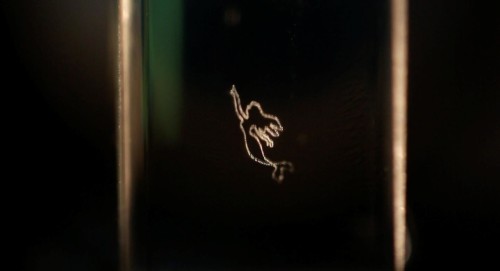
Tiny bubbles: a laser-made mermaid. (Courtesy: Kota Kumagai/ Utsunomiya University)
By Hamish Johnston
A popular way of melding science and art is to create an image of a mythical being in your lab. Yoshio Hayasaki and colleagues at Utsunomiya University in Japan have made a pretty good likeness of a mermaid using a laser that forms tiny bubbles inside a liquid. “In our display, the microbubble voxels are three-dimensionally generated in a liquid using focused femtosecond laser pulses,” explains team member Kota Kumagai.
Earlier this week astronomers announced the discovery of seven Earth-like exoplanets orbiting a nearby star. At least three are in the star’s habitable zone and could harbour life – which the astronomers say could be detected in the next decade. Team member Sean Raymond, an astronomer at the Laboratoire d’Astrophysique de Bordeaux was so inspired by the discovery that he wrote a poem called “Ode to 7 orbs”. Here is a sample:
Wake up now people, I’ve got some big news!
You won’t want to miss this. You don’t want to snooze.
We just found some planets while we were stargazing
Gather ’round, listen up. These ones are amazing!
What experimental physicist hasn’t lost a sample or two in the space of a career? But if you had made the first ever piece of metallic hydrogen, you would probably hold it dear. A month ago, Isaac Silvera and colleagues at Harvard University claimed to have made and characterized metallic hydrogen – a longstanding goal of condensed-matter physics. Their claim was met with scepticism from some physicists so I am guessing they have been busy in the lab backing up their result. According to the Independent, one of the diamonds in the anvil they use to apply great pressure to their hydrogen sample shattered and the tiny sample has disappeared. Oh the joys of doing experiments!
Guidelines
Show/hide formatting guidelines
this text was deletedwhere people live in harmony with nature and animals</q>
Some text